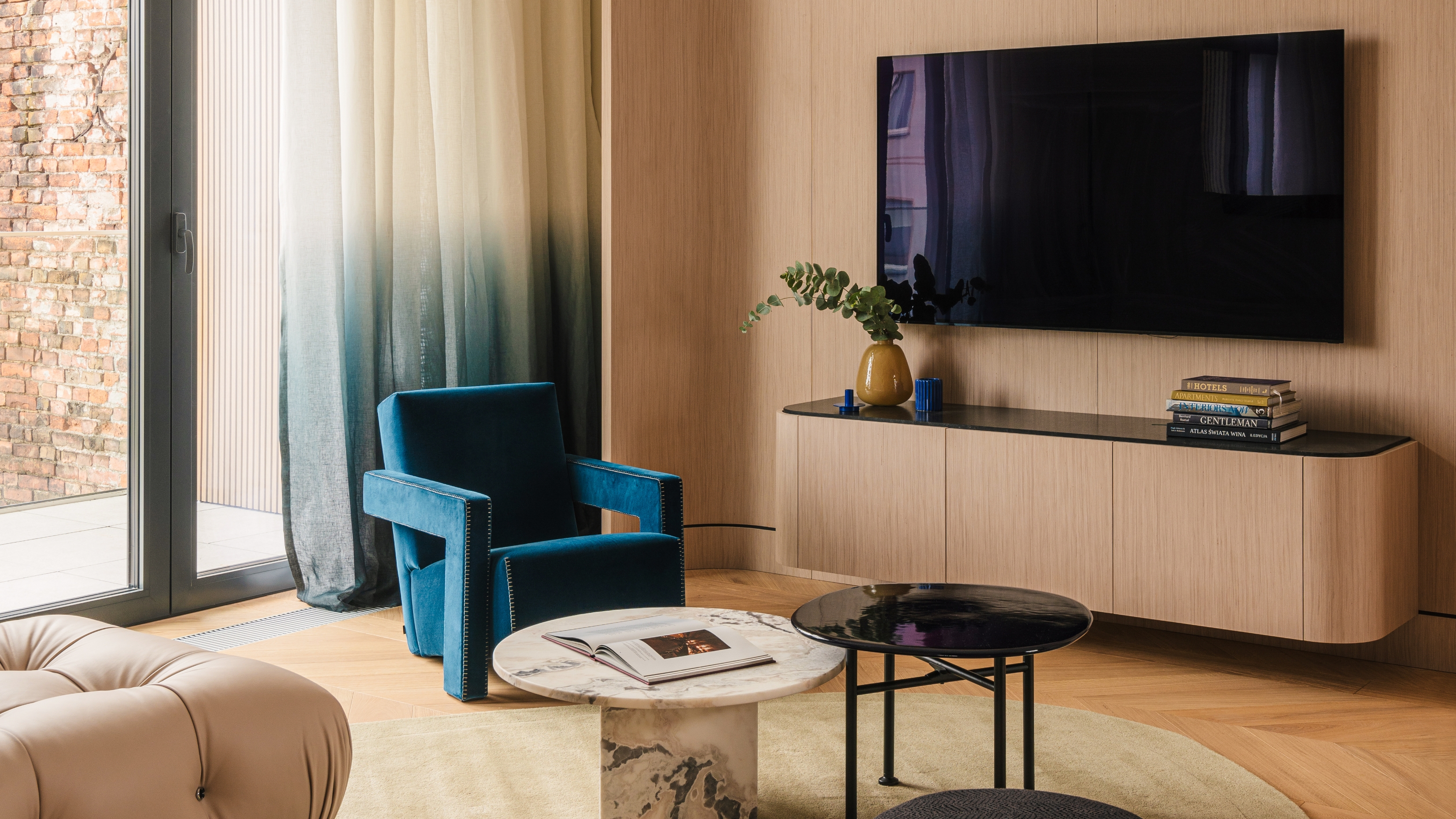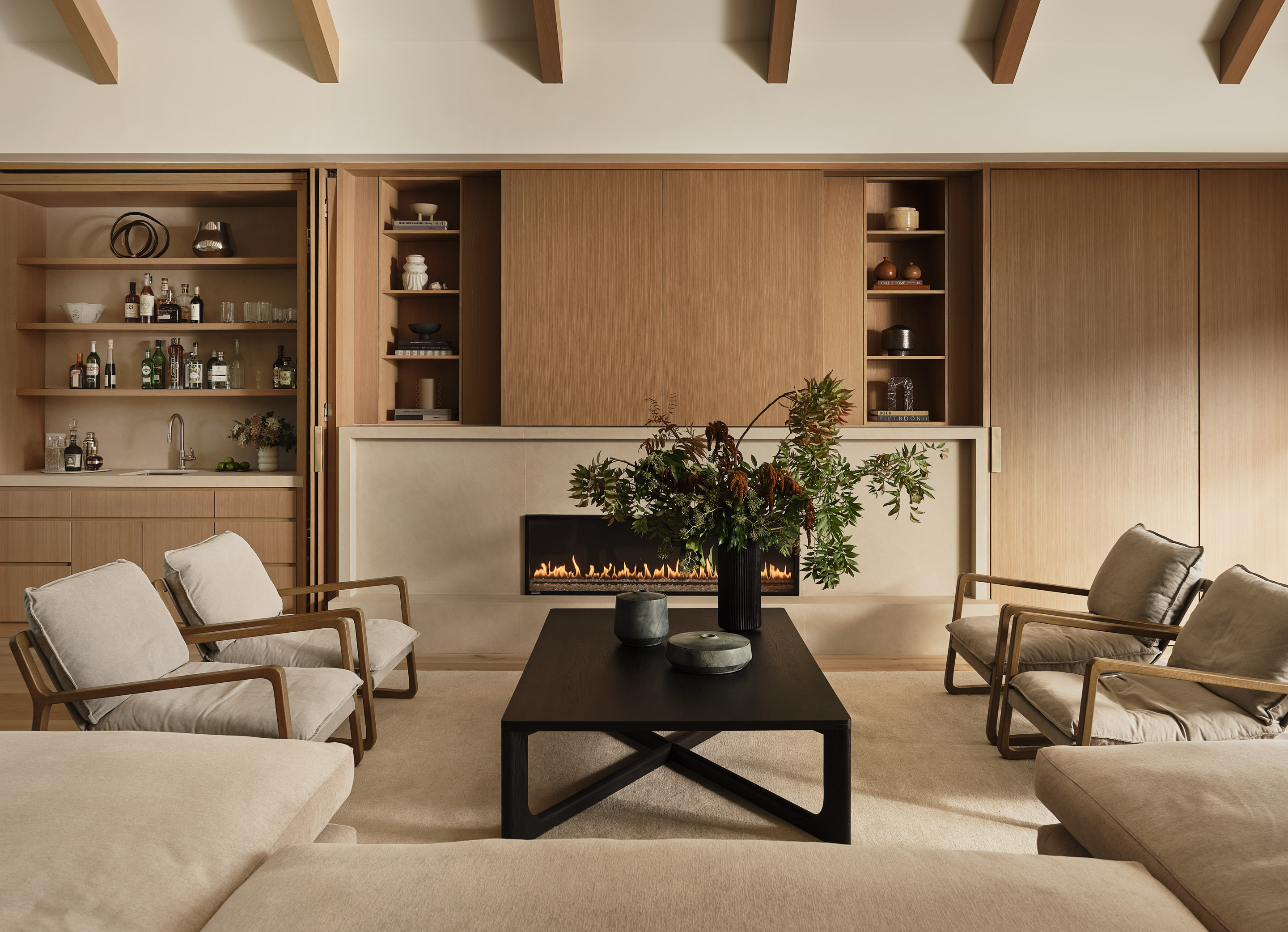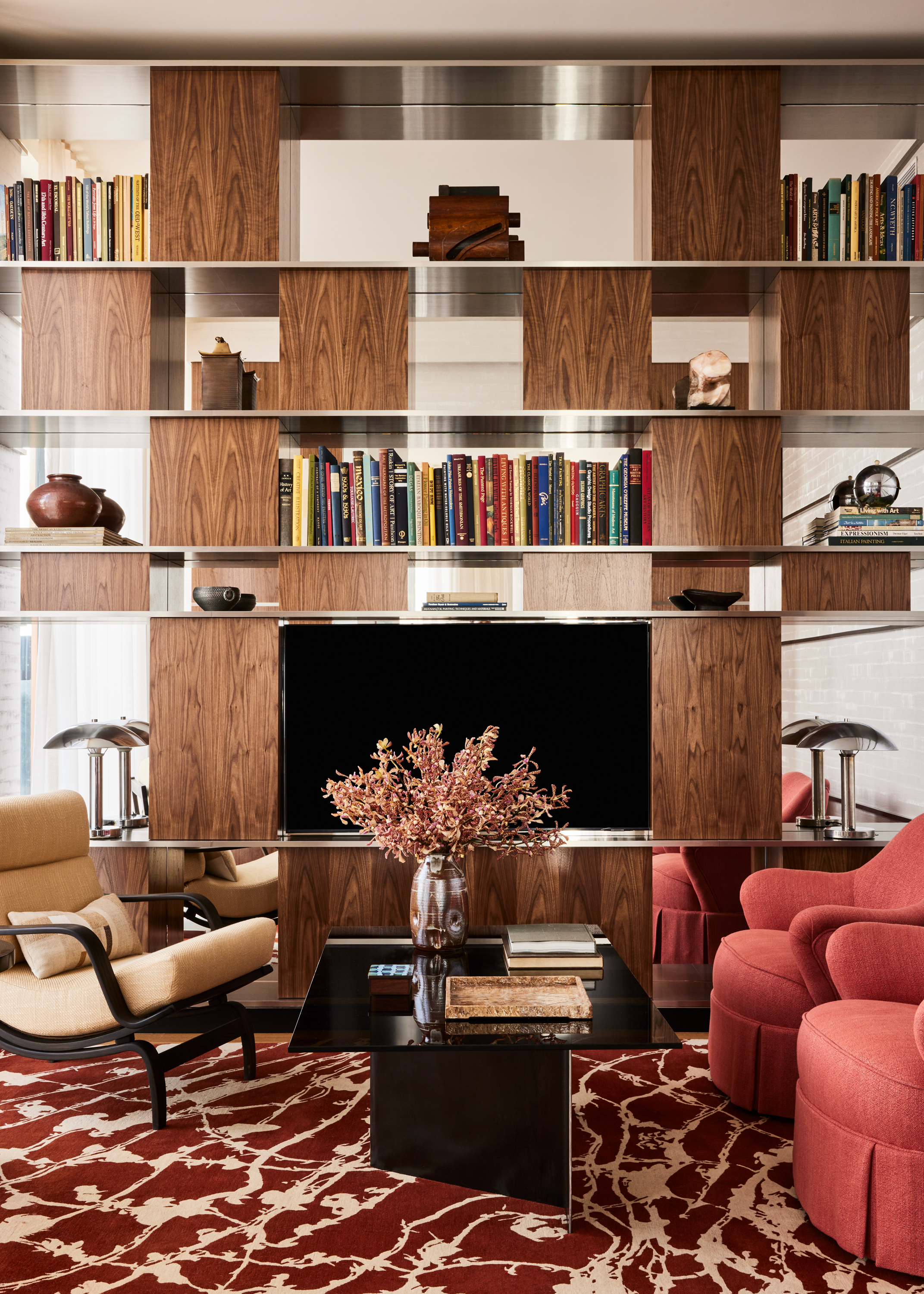Okay, These TV Wall Ideas Might Be the Best Inspiration to Stop Your Screen Becoming an Imposing Black Box
I've found 10 of the very best ideas for TV walls if you're looking for creative interior design


The mark of a good living room is that, whether in design or layout, it's not a slave to the TV. Now, don't get me wrong, I get my fair share of screen time on that big, black, rectangular box, but I don't really want it to be the focal point of my living space necessarily. However, the right TV wall ideas can ensure that where you do have a television, even a big one, it adds, not detracts, from your decorating scheme.
I say, take a big swing with your TV ideas if you're planning a modern living room. A good TV wall doesn't need to be apologetic — whether it's a trick to hide your TV away, or just take the shine off it by surrounding it with something even more eye-catching, let's do something interesting.
With that in mind, I've picked 10 of my favorite TV wall ideas I could find right now to inspire your project — and there's something innovative in here to suit all kinds of decorating tastes.
1. Make a Feature With a Lacquer Finish

As a starting point for not making the TV a focal point, not making your TV wall idea focus on the TV is as good as any. In this London home, this brilliantly-glossy red built-in storage wasn't ever conceived of as just housing the TV.
“As a family of avid readers, much of the design conversation centered around how to incorporate spaces for books and reading," says senior project architect at De Rosee Sa, Claire Mannings. "The lacquer bookcase became a key feature, reflecting both their love of books and the need for practical storage. Since this is their only formal living room, we included a TV, but made sure it wasn’t the focal point."
If you don't want the TV to draw attention, using a scene stealer like the gloss paint idea is a good one. "The lacquer finish also helps reflect natural light from the bay window which brightens the space," Claire adds.

After gaining a masters in architecture from University of Westminster, Claire has since worked at practices including Mary Duggan Architects and Allies and Morrison, before joining De Rosee Sa in 2020.
2. Try This Hide and Reveal Idea

If you're considering something a little more measured in design, this minimalist living room by Studio JYO incorporates some surprisingly versatile hidden storage ideas that help the owners control how minimalist the room actually feels.
The Livingetc newsletters are your inside source for what’s shaping interiors now - and what’s next. Discover trend forecasts, smart style ideas, and curated shopping inspiration that brings design to life. Subscribe today and stay ahead of the curve.
"The millwork around the fireplace was designed for several purposes," Joo-Oh, founder of Studio JYO, tells me. "When the TV is not in use, the panels can be moved to the center to reveal shelving which acts as a decorative element. But the panels can also be fully closed when desired, to hide the shelving and the TV."
3. This Classic TV Gallery Wall

Now, hiding a TV in a gallery wall isn't necessarily a groundbreaking TV wall idea, but it's rarely I've seen one done quite as effectively as this one by Brittny Smith of Homesmith Design.
"It was important that a big black tv wasn't the central character of our open concept space," Brittny explains, "so we designed this gallery wall around a Samsung Frame TV to be indistinguishable from the other art pieces we sourced for this room."
The scale of the other artworks surrounding it and the layout make it feel more at home in the gallery wall, in spite of its size, while framing it with the wall scones ensures it feels like the center of this display.
4. This Retro-Inspired Glass Design

Finding a way to hide a TV isn't the only way to minimize its impact. In the design of this Barbican apartment, interior designer Olga Alexeeva of Black & Milk used an amber glass sliding panel over the TV wall that tempers down the harshness of the black screen in the living room.
It's an idea that plays into the home's retro styling, as well, and the material can be found elsewhere in the home, including the kitchen cabinets. If amber glass is a little too 70s for your taste, something like a reeded glass would have a similar effect.

Under creative director Olga Alexeeva, interior design studio Black & Milk takes a highly tailored approach to each clients’ home, but always with a focus on cozy luxury.
5. This Artistic Sliding Built-in

Ever since seeing the dramatic quote for living room wall decor in this home, I've been a little obsessed. However, after finding out that behind that artwork the living room's TV is hiding, too? That's next level.
"The large white sliding panel conceals the TV from the living room when not in use and serves as a canvas for the brass artwork," says Chad Falkenberg, co-founder of Falken Reynolds, who designed the home. "A thin metal surround hides the ceiling-mounted track hardware, while a stone hearth and oak backing add warmth."
6. This Wallpaper Door Idea

It's not necessarily the case that a good TV wall idea needs to disguise the fact that there's a TV hidden within it, and this idea by Lisa Lev Design and Studio Sonny uses a single panel to hide the TV, that you could certainly guess there was a TV behind.
It gives an opportunity, however, to introduce a new pattern and texture into the space with this wallpaper idea. "A sliding door clad in wallpaper becomes a functional design element, concealing the TV when not in use and acting as an artful focal point," Katyeln Rempel at Studio Sonny, says, "while copper linen laminate fronts introduce a subtle texture and sheen, complementing the warmth of the oak."
7. This Sliding Artwork Design

Can I call it? This might be my favorite TV wall idea of all. While it's a relatively simple idea at first look, however, it wasn't quite so in execution. "This was by far the biggest challenge in the project," interior designer Ronit Lee of Vellum Design Studio, tells me. "The one wall was both ideal for the TV and an artwork, so we had a niche recessed to accommodate the TV panel. We searched for an artwork to set the tone for the room without swallowing it up and had strict size parameters to ensure coverage of the niche and sufficient space for the artwork when reveal the TV."
"We found this incredibly ethereal yet powerful Marissa Purcell piece at Galerie Artempo. Gabrielle of Shelton Studios created and installed the beautiful bronze track and hardware. This collaboration was a highlight of the project — it all came together beautifully," Ronit says.

Interior designer Ronit brings a global approach to her design studio. Having grown up around Asia, Europe, and the Middle East, she now splits her time between New York and Los Angeles.
8. This Curved Timber TV Wall

"This TV wall is finished with light wood and features curved edges," Tomasz Ziółkowski of JT Grupa says, "while the minimalist floating cabinet adds a sense of lightness to the space." However, my main takeaway from the use of the curved wall behind the TV is how it seems to zone the living room layout, and make it feel more intimate in the space.
It's a clever TV wall idea as it offers space for the accoutrements of modern technology, and doesn't require making a recess in the actual wall of the property to sink the TV in.
9. Make a Statement With Mirror

This snug designed in The Brooklyn Tower by New York-based studio Husband.Wife has an endlessly fascinating TV wall idea, combining mirror and timber storage. The wall reflects the views of the city, as well as into the apartment's kitchen, but it also brings the biggest sense of style to the property.
"Outside of the layout and vantage points, we wanted the design to speak to the nouveau-deco aesthetics of the building," say Justin Capuco and Brittany Hart, founders of Husband.Wife. "To that end, we started with horizontal metal strips (reminiscent of the building details) and used those as the unifying details between the shelves and library doors. The storage cabinets within the shelving and the library doors are made with the same warm walnut, which balances the cool edge of the metal lines."
10. Surround It With Storage

If you've got to have a TV wall, why not use your built-in to add valuable storage to your living room? That was the idea in this Arkansas home designed by MeetWest Studio.
"While can't claim credit for these built-ins as they came with the house," Whitney Romanoff, founder of MeetWest Studio, says, "we supplemented the built-ins by adding lower doors to close in some of the open storage, as there were plenty of open shelves already."
Around it, the designer complemented the room with a mix of eclectic style decor. "We used the shelves as an opportunity to create a mix of objects, ceramics, books, and art that contribute to the overall collected feel."
FAQs
How Can I Make a TV Wall Look Good?
There are a number of ways to choose from when wondering how to mount your TV to a wall so that it looks good. Choose from creating a gallery wall, mounting your TV into a bookcase area, styling the area around the TV with objet d’art and plants and more.
Mounting a waterproof TV into a bathroom will add spa-style to your scheme, while for the ultimate in luxury you can opt for a ceiling-mounted TV.
What Should Be Under a TV on the Wall?
Furniture stores are filled with attractive TV media cabinets, dressers and console tables designed to sit underneath your TV. Whether you choose to mount your TV onto the wall or stand it on a piece of freestanding furniture like this, there are endless options when it comes to style.
Choose from ultra modern cabinets designed to more traditional units, designed to house all the extra kit that comes with your TV. However, the majority of modern TVs have far less kit than ever, so you may get away with having a TV on the wall without a cabinet.

Luke Arthur Wells is a freelance design writer, award-winning interiors blogger and stylist, known for neutral, textural spaces with a luxury twist. He's worked with some of the UK's top design brands, counting the likes of Tom Dixon Studio as regular collaborators and his work has been featured in print and online in publications ranging from Domino Magazine to The Sunday Times. He's a hands-on type of interiors expert too, contributing practical renovation advice and DIY tutorials to a number of magazines, as well as to his own readers and followers via his blog and social media. He might currently be renovating a small Victorian house in England, but he dreams of light, spacious, neutral homes on the West Coast.

